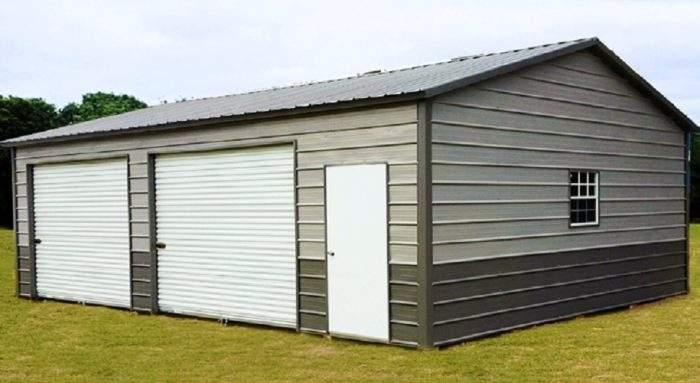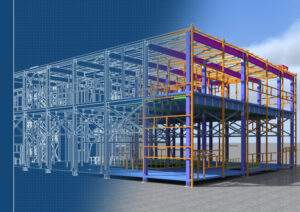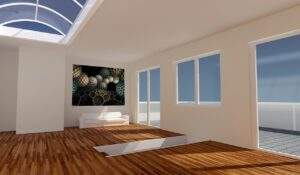Find Top 7 Health Benefits of Steel Buildings

When it comes to construction, people don’t consider health risks nearly enough. Pre-engineered steel structures have a lot of health advantages.
Building material selections have a direct impact on the environment, both now and in the future. Building material selections, however, have an impact on the health and well-being of the structures’ occupants, even when environmental factors are considered.
1. Steel Buildings Avoid Treatments of Chemical Termites
To provide at least some termite resistance, lumber is frequently pressure-treated with harsh chemicals. In many regions of the country, building standards require the injection of hazardous chemicals into the soil around wood-framed structures to lessen the risk of termite infestation.
Steel is a non-organic material. Steel is too hard for termites to eat. Metal buildings do not require the use of carcinogenic termicides, which can leach into the soil or outgas into the building envelope.
2. Steel Buildings Do Not Affect the Quality of Air
Steel is not a complex creature. It doesn’t produce any volatile organic compounds (VOCs), which are known to contribute to poor indoor air quality.
3. No composite materials are used in Steel framing
Engineered wood products enable the timber industry to make better use of decreasing forest resources. These wood goods, on the other hand, frequently contain resin adhesives or formaldehyde-based glues, which can outgas and negatively impact indoor air quality. There are no adhesives or glues in steel, of course.
A properly insulated prefabricated steel building dramatically reduces heating and cooling costs. This minimizes the amount of energy used over the structure’s lifetime.
Steel structures that have been pre-engineered rise straight and true. They remain like way throughout the building’s lifespan. Steel frame does not shift, creep, or loosen with the passage of time.
Steel-framed windows and doors continue to close tightly. Air leaks and draftiness are frequent in older wood-framed structures. Robust pre-engineered steel construction does not allow for framed wood.
4. They Are Mold Resistant
According to the Asthma and Allergy Foundation of America, roughly 40,000 people in the USA have an asthma attack every day. Any mold could be harmful to your health, especially if you have allergies, asthma, or other conditions. Mold exposure can make people quite sick, even if it’s only a small amount.
Mold and fungi require two things to survive and spread: an organic food source and water. Because wood is biological, it provides the ideal environment for mold to thrive. Because steel is inorganic, mold and other fungi cannot grow on metal.
5. Steel Buildings Impact on Environment
The steel plant is a lean, green, recycling machine, according to the American Iron and Steel Institute, producing new steel from recycled steel scrap. Every year, enough iron and steel are recycled to save the country 74% of the energy required to produce new steel.”
The industry is currently investing in new ways to boost productivity while producing little or no CO2.
Steel structures that have been pre-engineered rise straight and true. They remain like way throughout the building’s lifespan. Steel frame does not shift, creep, or loosen with the passage of time. Steel-framed windows and doors continue to close tightly. Air leaks and draftiness are frequent in older wood-framed structures. Robust pre-engineered steel construction does not allow for framed wood.
6. Steel Structures Not Supports Noise Pollution
Unfortunately, noise pollution is a fact of life, particularly in metropolitan areas. Noise pollution affects not only hearing but also stress levels in individuals who are exposed.
The framing of prefabricated metal buildings is made of commercial-grade steel, which results in extensive wall voids. Thicker walls allow for thicker insulation, which substantially reduces the amount of outside noise that gets into the house. You can have a look at steel building prices to buy one for you.
7. Steel Framing Supports Forest Growth
Steel-framed construction not only improves indoor air quality but also helps to reduce pollution outside. How? It functions in two ways.
To begin with, the more steel-framed structures there are, the fewer wood-framed structures there are. As a result, more trees are alive and well, working hard to convert carbon dioxide into pleasant, fresh, oxygen-rich air. Second, because steel is significantly more durable and long-lasting than wood, buildings will need to be replaced far less frequently. This also helps to relieve pressure on the world’s diminishing forests.
Steel structures are resistant to deterioration. The last decades are longer than regular structures in terms of beauty and value. The amount of construction debris put into overcrowded landfills is reduced by extending the lifecycle of structures.







